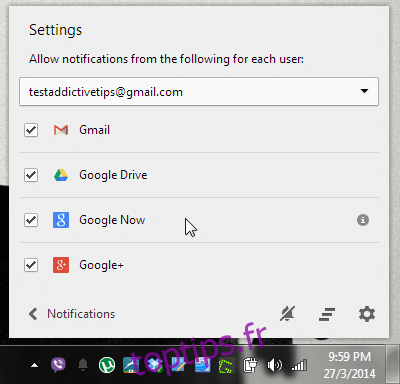

In addition, In Chrome and Firefox you cannot request notifications at all unless the site is a secure context (i.e. Firefox is already doing this from version 72, for example, and Safari has done it for some time. This is not only best practice - you should not be spamming users with notifications they didn't agree to - but going forward browsers will explicitly disallow notification permission requests not triggered in response to a user gesture. Olemme todellakin sitä mieltä, että yksi on poistettava, koska kaikki se tarjoaa voidaan nähdä jossain muualla. You should only request consent to display notifications in response to a user gesture (e.g.
#Google chrome install notify service.com full#
This would give the user full control over the updating, and ensure that updates wont be installed automatically on computer systems.
#Google chrome install notify service.com manual#
This is different from the behavior of most web browsers, as they do ship with options to set updates to manual for instance. Tap Windows Key then R on your keyboard, on the Run box type in temp then press enter. This is a common requirement when an API tries to interact with something outside a web page - at least once, the user needs to specifically grant that application permission to present notifications, thereby letting the user control which apps/sites are allowed to display notifications.īecause of abuses of push notifications in the past, web browsers and developers have begun to implement strategies to help mitigate this problem. Many programs ship with options to block updates, but Google Chrome is not one of them. Go to start type in Control Panel, then go to Programs and then programs and features then go to the list of the programs look for anything unusual or any application that you are not aware right click then uninstall. Before an app can send a notification, the user must grant the application the right to do so.


 0 kommentar(er)
0 kommentar(er)
